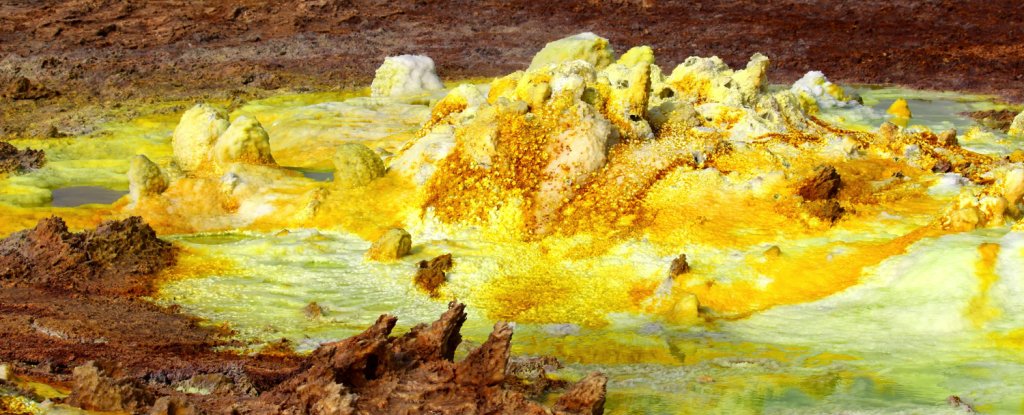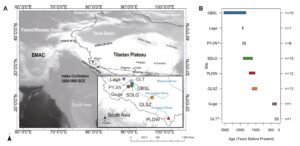As the world turns to green hydrogen and other renewable energy sources, scientists have discovered that archaea — the third form of life after bacteria and eukaryotes — have been producing energy using hydrogen gas and “ultraminimal” enzymes for billions of years.
Specifically, the international team of researchers found that at least nine species of archaea, a domain of single-celled organisms without internal membrane-bound structures, produce hydrogen gas using enzymes thought to exist only in the other two life forms.
They found that archaea not only have the smallest hydrogen-using enzymes compared to bacteria and eukaryotes, but their hydrogen-consuming and producing enzymes are also the most complex yet characterized.
Small and mighty, these enzymes have seemingly allowed archaea to survive and thrive in some of the most hostile environments on Earth, where there is little or no oxygen.
“People have only recently started thinking about using hydrogen as an energy source, but archaea have been doing it for a billion years,” said Pok Man Leung, a microbiologist at Monash University in Australia who led the research.
“Biotechnologists now have the opportunity to take inspiration from these archaea to produce hydrogen industrially.”
Hydrogen is the most abundant element in the universe and is used worldwide to make fertilizers and other chemicals, process metals, process food and refine fuels.
But the future of hydrogen is in energy storage and steel production, which can be produced with zero emissions if renewable energy is used to convert materials such as water into hydrogen gas.
Microorganisms produce and release hydrogen gas (H2) for quite different purposes, mainly to dispose of excess electrons produced during fermentation, a process in which organisms extract energy from carbohydrates such as sugars without oxygen.
Enzymes used to consume or produce H2 are called hydrogenases and were first studied in detail in the tree of life just eight years ago. Since then, the number of known microbial species has exploded, especially the archaea that lurk in extreme environments such as hot springs, volcanoes and deep-sea vents.
However, most archaea are known only from parts of their genetic code found in these environments, and many have not been cultured in the laboratory because it is very difficult to do so.
So Monash University microbiologist Chris Greening and his colleagues looked for the gene encoding part of a type of hydrogenase, a fast-acting [FeFe] hydrogenases, in more than 2300 groups of archaeal species listed in a global database.
They then tasked Google’s AlphaFold2 with predicting the structure of the encoded enzymes and expressed these enzymes in E. coli bacteria to verify that these genes actually function and produce hydrogenases capable of catalyzing hydrogen reactions in their surrogate host.
“Our discovery brings us one step closer to understanding how this crucial process gave rise to all eukaryotes, including humans,” says Leung.
Eukaryotes are organisms whose cells contain a nucleus and membrane-bound organelles such as mitochondria and other useful cellular factories.
All eukaryotes are thought to have arisen from the union of an anaerobic archaea and a bacterium that it ingested billions of years ago. Then a second, much later endosymbiosis gave rise to the progenitor of plants with chloroplasts.
Greening, Leung and their colleagues discovered the genetic instructions for [FeFe] hydrogenases in nine archaeal phyla and confirmed that they are indeed active in these microorganisms—making three out of three areas of life that use these types of enzymes to produce hydrogen.
But unlike bacteria and eukaryotes, further analysis shows that archaea assemble “remarkable hybrid complexes” for their hydrogen production needs, fusing two types of hydrogenases together.
“These findings reveal new metabolic adaptations of archaea streamlined H2 catalysts for biotechnological development and a surprisingly intertwined evolutionary history between the two major H2-metabolizing enzymes,” the team wrote in their paper.
However, many of the cataloged archaea genomes analyzed in this study are incomplete, and who knows how many more species are yet to be discovered.
It is more than likely that archaea harbor other ingenious ways of producing energy that we have yet to discover.
The study was published in cell.



